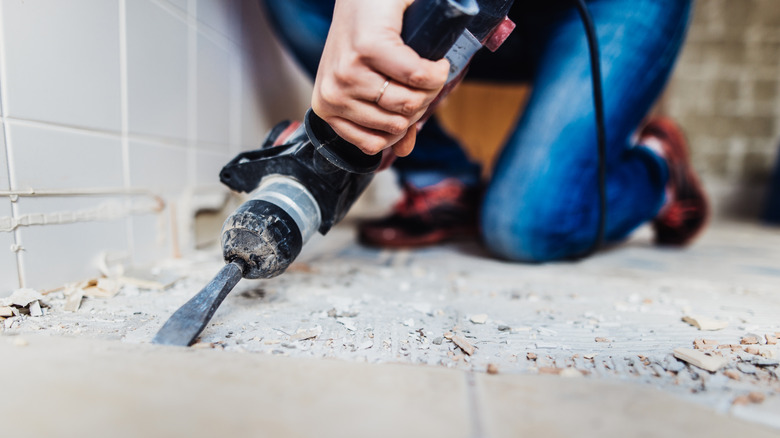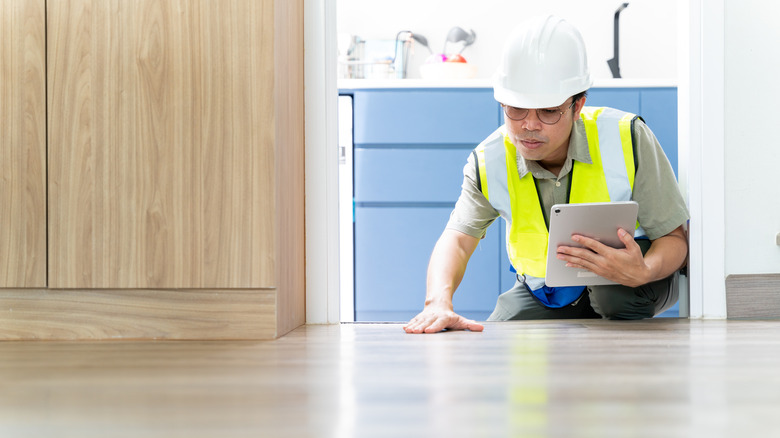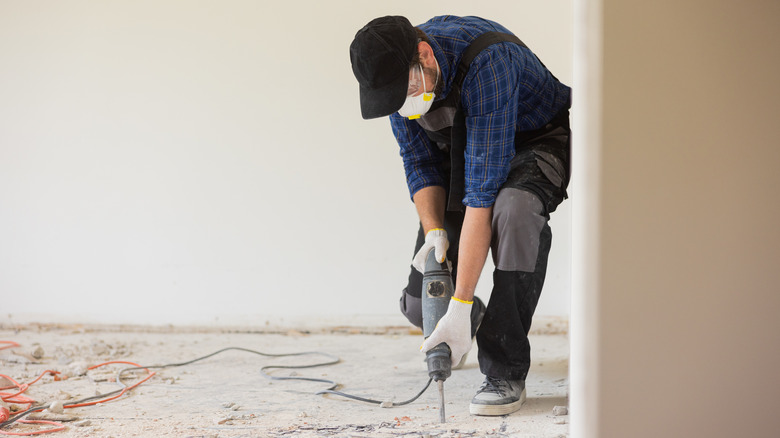Asbestos Floor Tiles Are A Hidden Reno Danger. Here Are Signs To Watch Out For
Asbestos is a naturally occurring mineral found in rocks and soil. Its strong fibers, resistance to heat, and anti-corrosive properties are why it was used for various building materials, but its dangerous health effects are why it has been banned since the 1980s. However, it's possible the most dangerous type of asbestos could be lurking in your home right under your feet. Before you pull up your floors for renovations, it's best to ensure they are asbestos-free and you won't be exposing yourself or your loved ones to the illness-causing mineral.
In an exclusive House Digest interview, we spoke to Matt DiBara, a fourth-generation contractor and co-founder of The Contractor Consultants, to learn the signs of asbestos floor tiles and find out what to do if they're in your home.
"Many older homes contain asbestos in floor tiles, ceiling tiles, or insulation, but since asbestos fibers are not visible to the naked eye, these materials can seem harmless," DiBara explained. "It's only when they are disturbed — by cutting, sanding, or demolition — that dangerous asbestos fibers can be released into the air, posing serious health risks like lung disease or cancer, asbestosis, and potentially mesothelioma." If asbestos is present, you'll need a certified professional to handle the removal. Once it's gone, then you can focus on the fun parts of renovation.
How to know if there's asbestos in your home
The possibility of asbestos floor tiles is an important thing to consider before you gut your home. "To determine if you have asbestos tiles, start by considering the age of the building and the materials used," Matt DiBara exclusively told House Digest. "Homes built prior to the 1980s are almost certain to contain asbestos-based products." Typically, 9-by-9-inch tiles are a main harborer of the dangerous mineral, but it can be present in flooring of any shape and size. Apart from the tiles, asbestos can also be in sheet flooring and tile adhesive.
"One way to know for sure is to have a sample tested by a certified laboratory, as asbestos cannot be identified just looking at it," DiBara explained. The floor sample must be taken by an accredited asbestos inspector. It is best to test the material if the tile is already cracked or you plan on renovating the floor; otherwise, you may not want to disturb any potential contaminants. Floor tiles that contain asbestos but are in good condition shouldn't cause any harm as long as they are well-kept. However, if the results are positive for asbestos and you're ready to renovate, you'll want to remove the contaminated tile as soon as possible.
How to safely remove asbestos floor tiles
"The biggest danger when removing asbestos tiles is the release of airborne fibers," Matt DiBara exclusively told House Digest. "These fibers can pose a risk during the removal process and even afterward if the area isn't properly managed." Improper techniques can increase the chance of exposure and spread the asbestos to other areas of your home.
It might be easy to remove floor tiles, but if they contain asbestos, then it's not a DIY project. "You should seek out a licensed professional who is trained to safely assess and remove asbestos in accordance with legal regulations," DiBara advised. A certified remover will have the proper equipment and skills to carefully remove all asbestos in your home and limit the risk of excess contamination. As DiBara warned, asbestos can also be found in ceiling tiles and insulation. So if you plan on renovating those areas too, be safe and check for asbestos first — especially in an older home.


